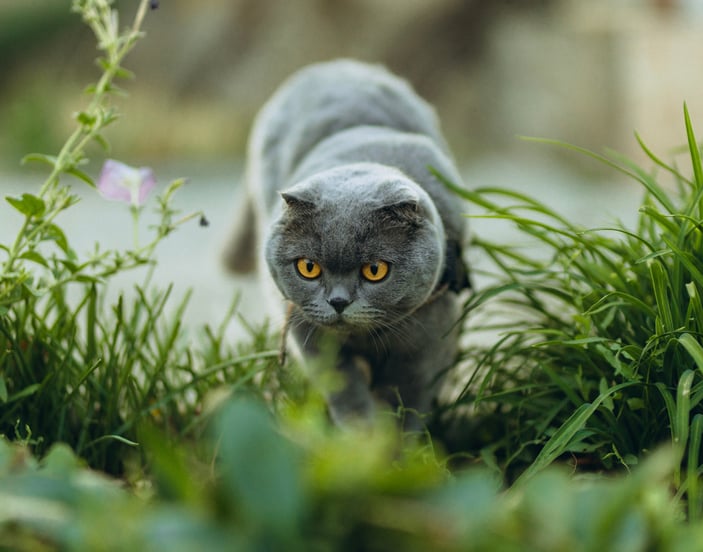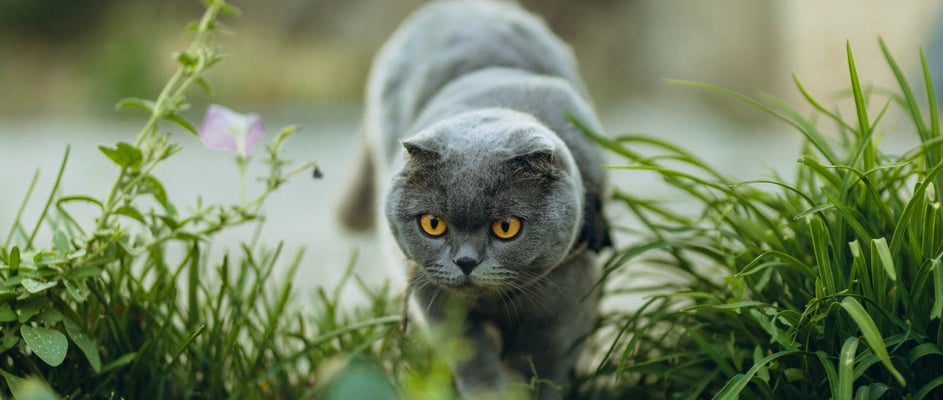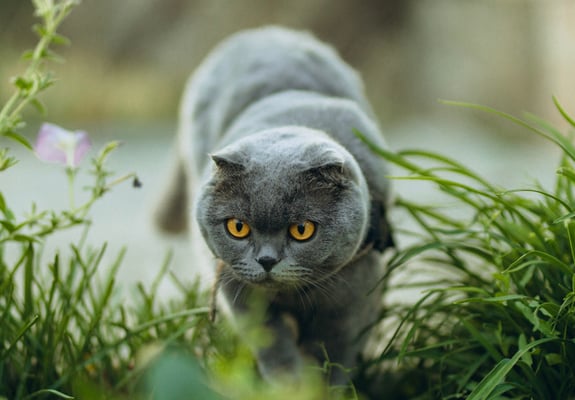The guide to owning a Scottish Fold cat.
Looking to welcome a cat into your home but not sure where to begin? Welcome, you’re in the right place. Secure a no-obligation quote with Waggel to make sure your new friend gets the cover they deserve.
Jump to:
Stats at a glance.
History and origin.
The Scottish Fold cat is a charming breed known for their unique folded ears that fold forward and downward, creating the famous “owl-like” face.
They’re often robust yet cuddly, and many owners adore them for their affectionate nature and soft coat. Let’s dive into everything you need to know about these sweet companions.
The story of the Scottish Fold traces back to a spontaneous mutation in farm cats in Scotland, famously linked to a barn cat named Susie. Susie had ears that fold forward due to a genetic mutation called osteochondrodysplasia, which affects all cats in the Scottish Fold lineage to varying degrees.
Early breeders recognised the cat’s unique ear shape and named the variety “Scottish Fold.”

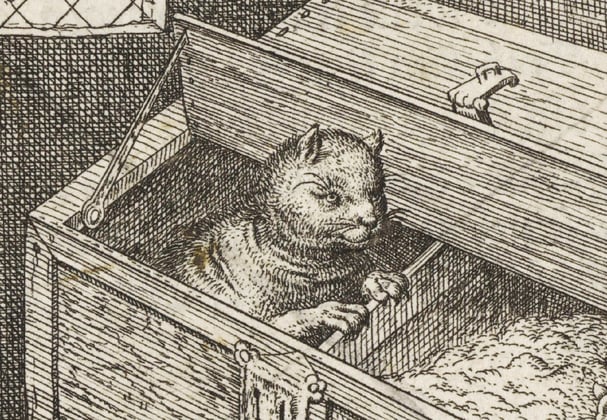
Physical characteristics.
When you meet a Scottish Fold in person, you’ll notice that signature round head with round eyes that seem keenly alert.
Their bodies are typically a medium-sized cat shape: sturdy, balanced, and neither too lanky nor too stocky.
The trademark folded ear can range from a tightly folded look to a loose fold, and sometimes cats in the same litter end up with straight ears, often referred to as straight-eared cats.
Scottish Fold kittens can be born with normal ears that later fold, or they may never fold at all. The breed features both short hair and longhair varieties, occasionally labelled as Scottish Fold Longhair.
Regardless of coat length, their plush fur gives them a cosy appearance you’ll likely want to cuddle.
Colours and patterns.
Scottish Fold cats come in a vast range of colours and patterns, mirroring those you might see in British Shorthair or other common domestic cats.
Typical colours include solid blue, grey, calico, tabby, and more:
Solids: Blue, black, white, cream
Tabbies: Classic, mackerel, spotted
Bi-colours: Combinations like white and black, white and red
Because the Scottish Fold gene pool sometimes includes outcrosses with other breeds, the palette reflects an array of coat possibilities. No matter the colour, the big, bright eyes and folded ears steal the show.
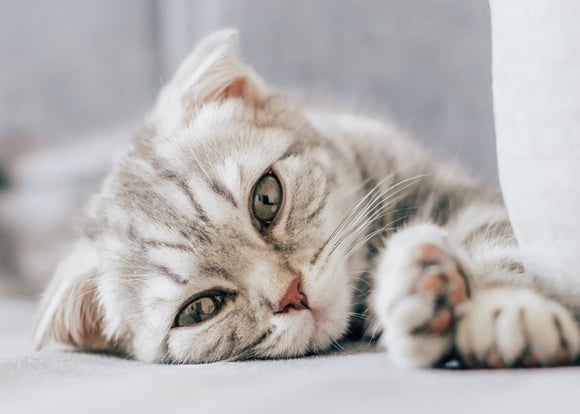
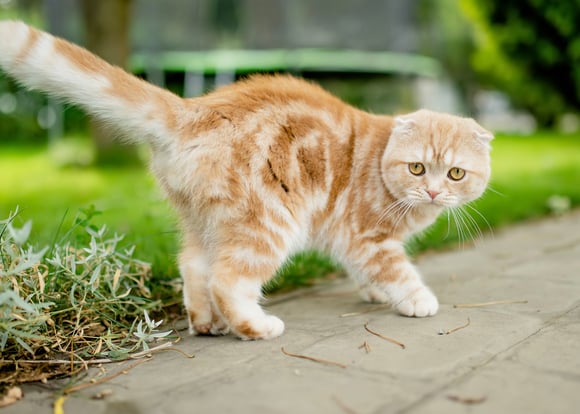
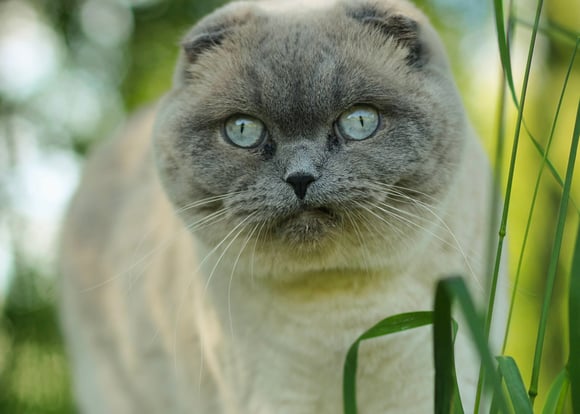

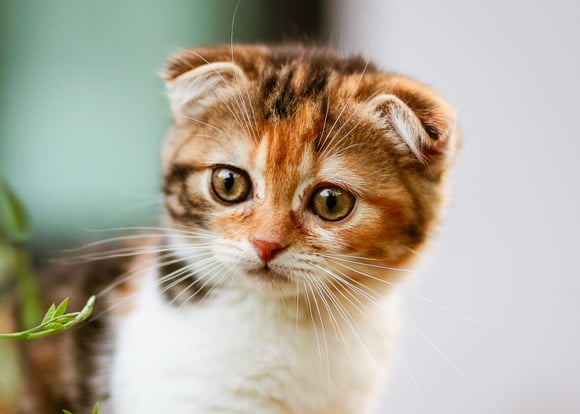
Temperament and personality.
Most owners know that Scottish Folds are often calm, gentle, and quietly playful. They love being near their families and may follow you from room to room just to keep an eye on the action.
However, these cats are known to have a laid-back yet curious side:
They enjoy soft, interactive toys and short bursts of exercise rather than extended high-energy play.
Many find them affectionate but not overly demanding.
They’re usually comfortable with children and other pets, adapting well to a family environment.
Overall, we see them as a lovely blend of loyalty and cosiness, offering a sweet balance for those who want a devoted companion without the intense whirlwind of more hyperactive cat breeds.
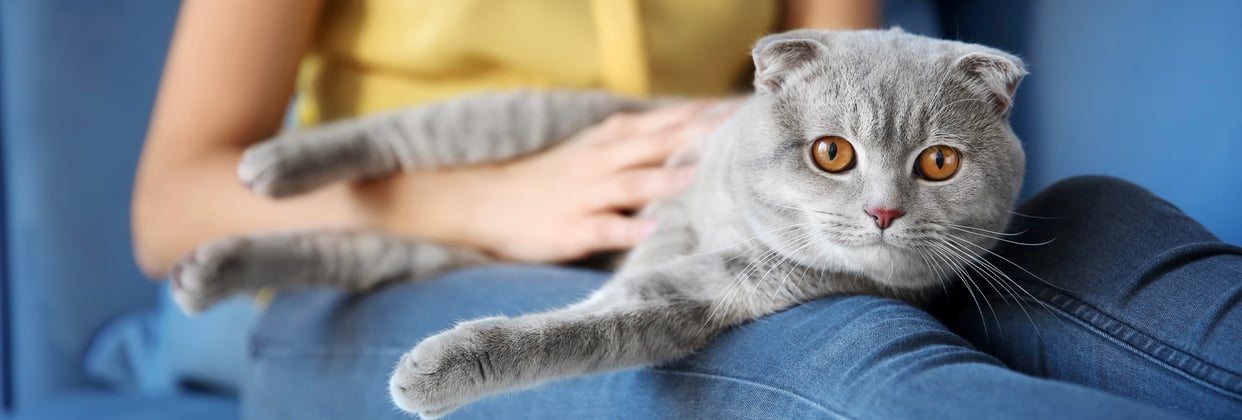

Health considerations.
The Scottish Fold Cat breed carries a known risk of osteochondrodysplasia, which can affect the joints and sometimes lead to arthritis if not monitored.
This is the same gene that causes the ears to fold, but it can also create bone and cartilage issues. Hypertrophic cardiomyopathy may also appear in some lines.
We recommend veterinary check-ups for joint movement, potential ear infections, and routine screenings for heart health.
Keep in mind that some cats may be more susceptible to polycystic kidney disease or other inherited conditions.
Breeding Scottish Fold cats must be done responsibly (often pairing a folded-eared cat with a straight-eared partner) to minimise risks.
Below is a quick chart of conditions your Scottish Fold might face, along with average UK treatment costs:
Note: Costs are approximate and can vary based on location and specific veterinary practices.
Check out our guide to Scottish Fold cat insurance for more information on how to protect your pet.
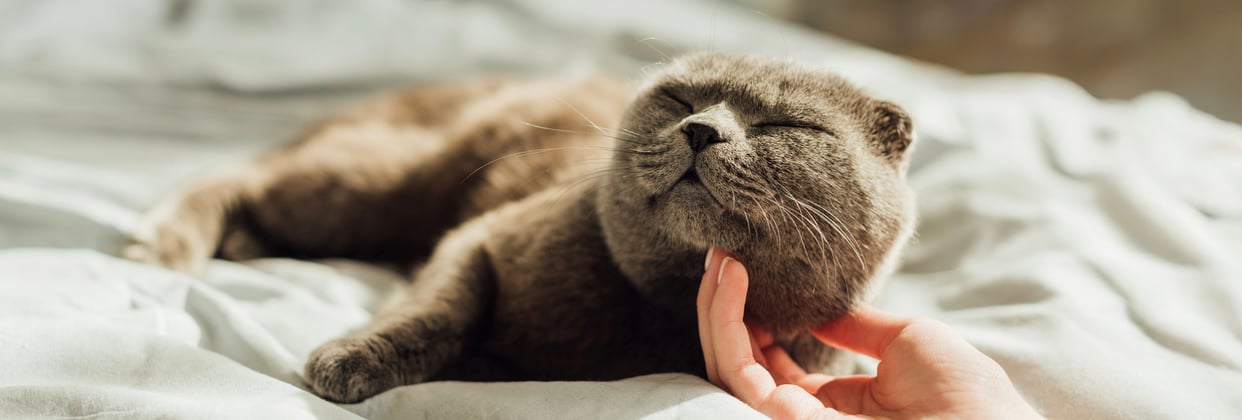

Living with a Scottish Fold cat.
Adopting or purchasing a Scottish Fold is an invitation into a home life gently filled with purrs and playful paw taps. We encourage families to offer:
A soft bed or cat tree that supports restful naps.
Gentle toys that spark curiosity without straining joints.
Calm attention to any limping or changes in movement that might hint at joint troubles.
If you worry about them scratching your furniture, have a look at our guide on how to get your cat to use a scratching post.
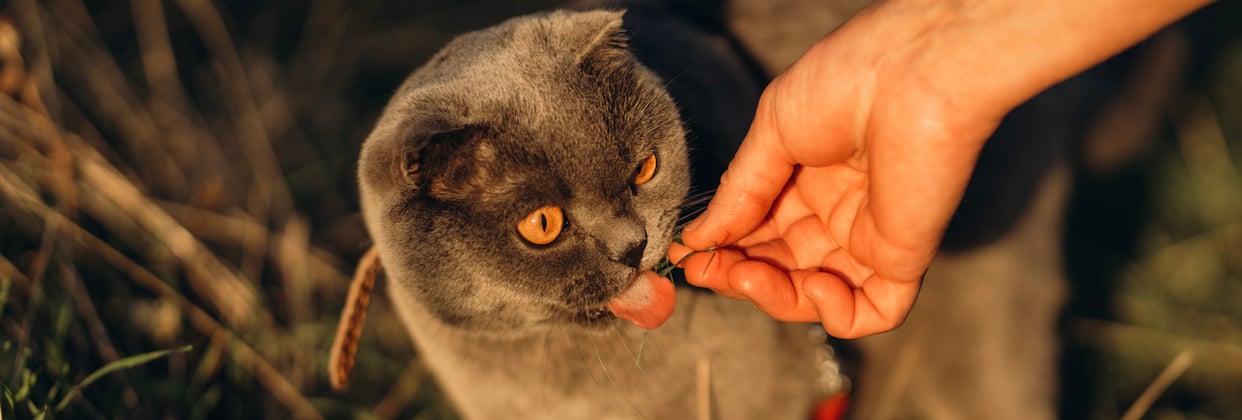

Grooming and care.
When it comes to grooming, caring for a Scottish Fold is generally straightforward:
1. Brushing: Regular brushing helps remove loose hair; once or twice a week can be enough for a shorthair. If you prefer professional tools, you can read about furminators for cats.
2. Ear checks: Because their ears fold over, cleaning the ear canal gently is crucial. Look for signs of redness or odour that might indicate infection. You can find pointers in this cat ear infection article.
3. Bathing: Most cats keep themselves neat, but if needed, see how to bathe a cat safely and calmly.
4. Nail trims: Clip the tips carefully when they begin to snag carpet or clothing.
For more tips on pampering your furry friend, have a look at our cat grooming guide tips.
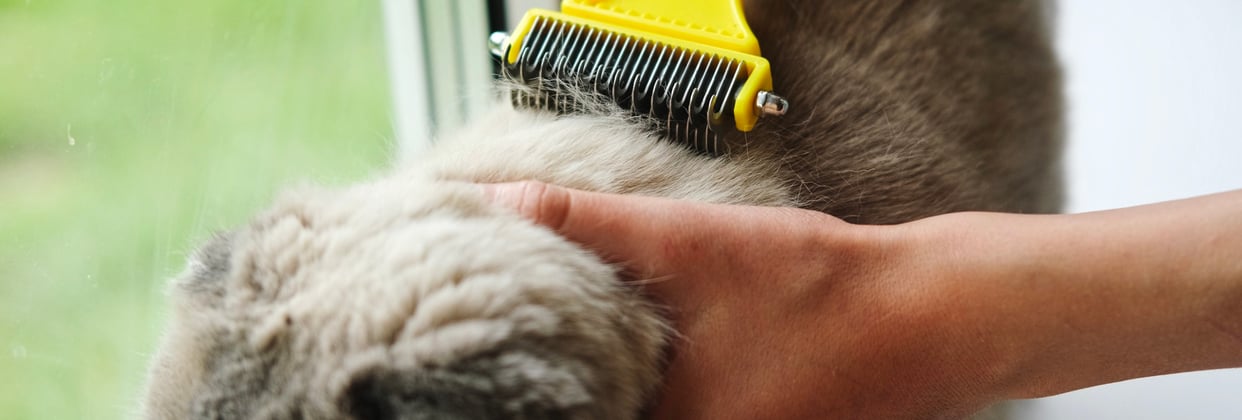

Diet and exercise.
Scottish Fold cats typically do well on high-quality, balanced cat food. Lean proteins plus essential nutrients help maintain a healthy weight.
Cats are very good at convincing us they’re still hungry, but portion control is essential. Obesity can worsen any underlying joint issues.
Limit treats and engage them in low-impact play sessions: a feather wand, rolling ball, or short laser-pointer chase. Five to ten minutes a few times a day can keep them agile without risking joint strain.
Is a Scottish Fold right for you?
If you dream of a mellow, owl-faced companion who loves being near people, a Scottish Fold might be your perfect match.
They thrive in quieter homes with gentle routines and appreciate your presence more than constant action.
Because Scottish Folds tend to develop deep attachments, they can experience separation stress if left alone for long stretches.
We always recommend getting a Scottish Fold from a reputable breeder who understands the risks of breeding cats with folded ears.
Alternatively, some rescue organisations feature Scottish Folds or straight-eared siblings in need of good homes.
Just be prepared to offer a joint-friendly environment and consistent vet check-ups that they deserve.
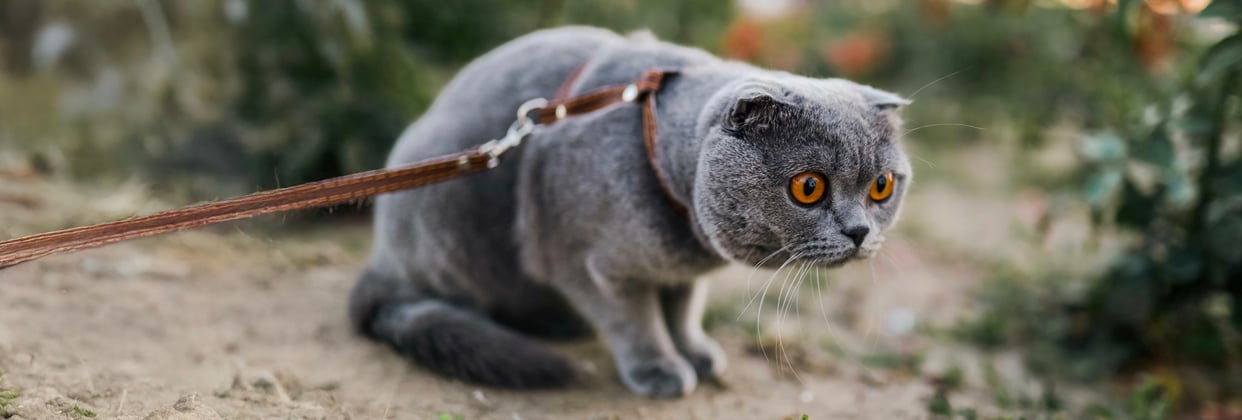

Frequently asked questions.
Are Scottish Folds hypoallergenic?
No. While they might have a dense coat, there is no proven evidence that Scottish Fold cats are affected by lower allergen levels. Allergy reactions can vary from person to person.
How do I choose a Scottish Fold kitten?
Seek a trustworthy breeder who pairs folded-ear cats with straight-eared partners. Ensure kittens look lively, and meet the parents if possible (especially the folded-eared parent) to gauge temperament. Confirm the breeder screens for any serious health issues.
Are Scottish Folds good family pets?
Many families find Scottish Folds to be adaptable and friendly. They tend to get along with gentle children and calm pets, though every cat is an individual. Early socialisation makes a big difference.


What is the price of a Scottish Fold cat?
Prices vary widely, typically from a few hundred to over a thousand pounds, depending on lineage and ear fold quality. Be sure to prioritise a cat’s health over a “perfect” look. Ethical breeders focus on limiting genetic problems just as much as aesthetics.
Do Scottish Folds get along with dogs?
They often do, provided the dog has a calm nature. Make slow, positive introductions. Overly rough dogs might stress a more reserved cat or worsen any limb discomfort.
Do Scottish Folds need outdoor access?
Not necessarily. An indoor life with safe climbing towers and stimulating toys can keep them happy. If you do allow outdoor time, consider a secure catio or harness walks. They’re curious but not typically as adventurous as some active breeds.
Pet insurance for Scottish Fold cats.
Because certain health issues can be costly to manage, it’s a good idea to look into a comprehensive pet insurance policy. Check out Scottish Fold cat insurance to find the right coverage for your cat’s specific needs.
With Waggel, you’ll find well-rounded policies that offer:
Lifetime cover for ongoing conditions
Coverage for breed-specific concerns
Simple, hassle-free claims process
Access to online vet support
We hope this guide helps you better understand the Scottish Fold breed and how to care for one. With regular vet check-ups, gentle handling, and lots of affection, your Scottish Fold can thrive.
These distinctive cats may be quiet and reserved, but they’re known for forming deep bonds with their families.
Keep them healthy and content, and you’ll enjoy many peaceful, loving moments with your charming Scottish Fold.
